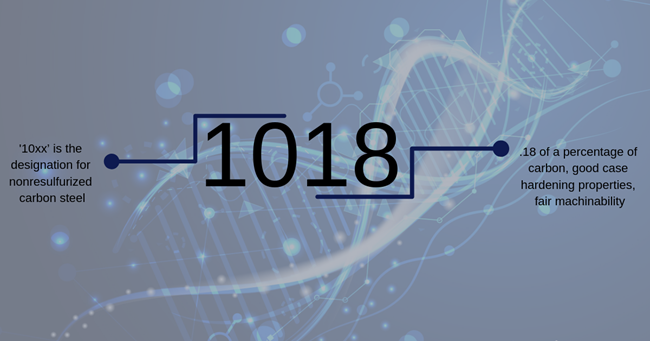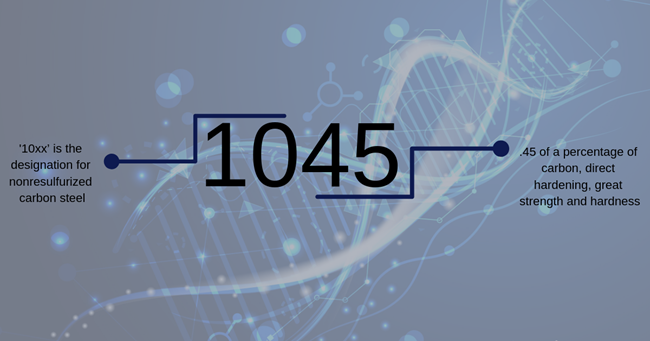.ashx?h=300&w=940&hash=2619C2BDA6683F41E6A63C93578351EB)
Do you know what makes each grade of carbon bar unique? With literally hundreds of different grades available, knowing which is ideally suited for what application comes down to a look inside the numbers.
Start with the first two numbers: ‘10xx’. In the world of metal, this is the designation for nonresulfurized carbon steel. From there, you have those grades that are considered very strong, those that are more ideally suited for being machined and those that are very hard, among other properties. And this is all being defined by the final two numbers.
To illustrate, let’s put grade 1018 under the microscope. 1018 is a low carbon steel bar made up of medium manganese content. It has good case hardening properties, fair machinability and is suitable for shafting and for applications that do not require great strength.
Now, let’s qualify each statement:
It is low carbon steel made up of medium manganese content. The final two numbers in a grade’s name indicate the amount of carbon it contains. This grade consists of .18 of a percent of carbon. This number can be considered a rate of value for carbon. Any rating under .30 basis points of carbon is considered low carbon.
All metal is made up of various alloying elements that control the microstructure. Manganese increases the solubility of nitrogen in the steel and may be used to replace nickel in nitrogen-bearing grades.
It has good case hardening properties. Case hardening is a process where you take a grade of steel that has under .30 basis points of carbon and subject it to a special heat treatment (typically called the “carburizing process”) with the intent of adding more carbon to the outer skin (the case). Picture an enclosed charcoal grill, where you are exposing the bar to a much higher carbon atmosphere. During this process, carbon is being absorbed into the outer layer.
Steel of any type must contain a certain level of carbon in order to harden. That will allow it to withstand the next step in the process, where the bar is quenched and tempered.
Fair machinability and is suitable for shafting and for applications that do not require great strength. This indicates the relative ease at which a piece of metal can be cut into a desired final shape and size. Generally, lower carbon-based grades are not known for their machinability.
Now let’s turn to exhibit B; grade 1045. This is medium carbon steel that is used when greater strength and hardness of the material is desired in the ‘as-rolled condition.’ Ideal uses include shafts, axles, bolts and studs.
It is a medium carbon. Again, breaking down the numbers, we see that it is:
10: Carbon steel
45: Consisting of .45 of a percent of carbon. This is significant in the fact that the number is above .30. Any such grade falls under a category called direct hardening. The concept of direct hardening is to make the steel harder more toward the middle (or deeper) without the need to add more carbon. And this is what allows 1045 to have greater strength and hardness in the ‘as-rolled condition.’
Now that we know the processes of case hardening and direct hardening are intended to add various amount of carbon to a bar, the question becomes: Why do we need different grades? Can’t one simply take the most affordable grade and soak in carbon until it reaches your desired level?
The simple answer to that question is no. There is a point at which you need to end the process of soaking more carbon into a grade, due to economic reasons, among others. You are better off selecting a grade that already has the higher level of carbon you desire. But that is a discussion for another time.
So, the next time you are considering the right grade for your application consider the name—and more importantly, the numbers.




